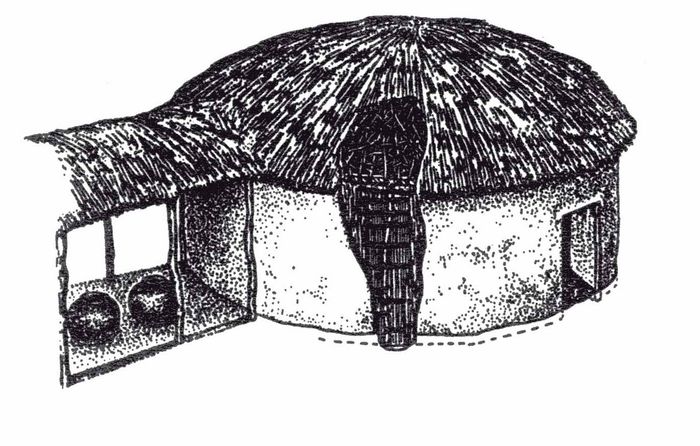Traditional House Building

Location of a settlement must meet a number of requirements:
- Drainage under heavy seasonal rainfalls;
- Shelter from rare strong winds, floods and landslides;
- Protection against surprise attack
The nature of a settlement of the native population of the Black Sea Circassians (Adygea) in Middle Ages is quite detailed in the written sources (Evliya Celebi, Jean de Luc). One of the determining factors was security, so small settlements up to docen of houses which were located in secluded places in the thick forests. Quite a significant number of locations, and usually a small capacity of the cultural layer confirms the data of the written sources of the «nomadic» life and extensive farming of the native population. In particular, I.A. Gildenshtedt reported about Circassians (Adygs), «Houses of the Caucasians are the same as had been already described, еру construction of a light plaid with wicker and white-painted walls. If they liked the area due to the soil, pasture, water, firewood, neighborhood, they were leaving their villages and build on the best of the countryside, in a short time the new ones. A “Circassian house” if needed was disassembled and taken away on the bullock-cart. Therefore wicker huts walls hadn’t been connected tightly in the corners and places of the joint seam only slightly smeared from inside and outside with clay». According to the ethnography, this tradition had undergone a certain evolution: they are displaced by single-row walls and walls of adobe (mud) bricks. The basis of this house is a framework of poles braided by branches or reeds. A more ancient practice to build a construction of woven walls (height of more than 2 m) in two rows, the space between them was slaughter clay. The floor in the house is ground, there was no ceiling. An important element of a dwelling house was a fire place, it was open, the smoke was taken out through a special hole in the roof. Ancient Circassian houses had a rounded shape in the plan and a conical roof, which had been covered by the reeds, straw and sometimes soil with specially seeded grass on it.
(Aleksey A. Malyshev)
